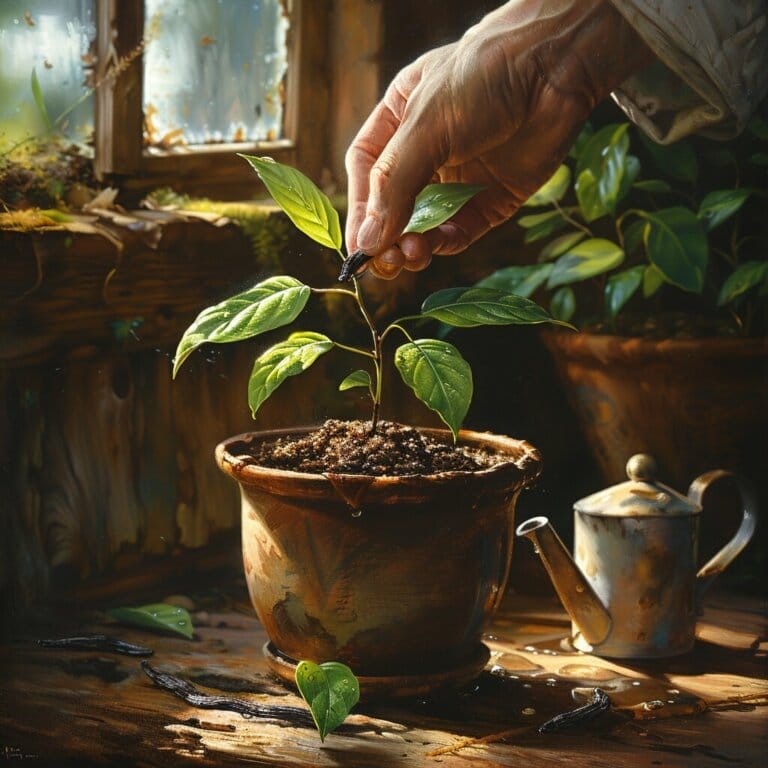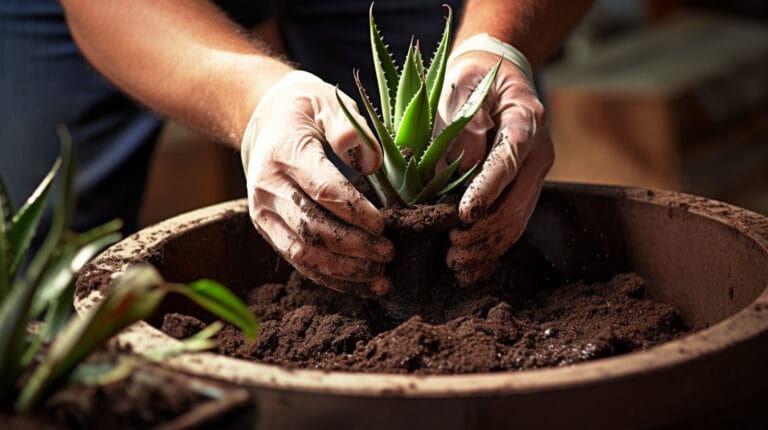Small White Flower Weed: Essential Types and Proven Garden Tips
We are all familiar with the times when tiny white flowering weeds unexpectedly invade our flawlessly manicured gardens and lawns. These flowers intrude without invitation, akin to crashers at a garden party, frequently disturbing the delicate harmony we labor to preserve in our own miniature pockets of nature.
As a seasoned gardener and nature photographer, I’ve developed a deep appreciation for these tiny rebels, even as they challenge the natural order. These delicate invaders aren’t just aesthetic anarchists but bring unexpected environmental perks, such as attracting bees and butterflies. However, their presence often reveals a silent turf war beneath our feet—a reminder that Mother Nature always has her own agenda.
My hands have sifted soil alongside chickweed’s dainty stars; I’ve brushed against the whimsical softness of Queen Anne’s Lace and chuckled at the bold stand made by sturdy daisy weeds. This article isn’t merely observations—it’s wisdom woven from countless hours amidst greenery and blooms. It’s your field guide to understanding your home ecosystem better.
Whether you choose peaceful coexistence or decide it’s time for gentle conquest, this insight is your first step toward enlightenment. Let’s journey together into this wild floral frontier.
Key Takeaways
- Different small weeds with white flowers, like chickweed, daisies, and white clover, can invade lawns, but each has unique features to help tell them apart.
- Proper lawn care is key to preventing these weeds from taking over. This includes mowing high, regular watering, and balancing soil pH.
- Natural methods like hand-pulling weeds and vinegar mixtures can control growth without harsh chemicals.
- Knowing the growing season of specific weeds helps plan the best time for weed control actions.
- Sometimes selective or non-selective herbicides might be needed for tough invaders, but always read labels and follow instructions carefully.
A Beginner’s Guide to Identifying Common Small White Flower Weeds
Diving headfirst into weed management starts with a keen eye for detail. I’ll walk you through the essentials of spotting these uninvited guests, arming you with the knowledge crucial to keeping your garden sanctuaries thriving and vibrant.
Exploring the Characteristics of Weeds with White Flowers
I often see weeds with pretty little white flowers when digging in my garden. Let’s look at what differentiates these from the plants I want to grow. These weeds often have unique leaf shapes or grow close to the ground.
Some, like common chickweed, spread quickly. Others might have clusters of white blooms that catch your eye.
It’s smart to know about their growth habits, too. For example, hairy bittercress likes damp soil and tends to pop up unexpectedly. Meanwhile, white clover can be tough to eradicate once it becomes your turf grass, sending out new roots that help it stay put and keep growing.
The Small White ‘Lace’ Weed – Common Chickweed
Common chickweed might look pretty with white flowers that seem to form a delicate lace over your garden, but don’t let that fool you. This hardy weed can quickly overrun your garden if not managed. It thrives in cool, wet places and spreads under shrubs or along the edges of garden beds, which are moist and shaded.
Managing this little plant requires know-how, as a single chickweed can produce around 25,000 seeds! To keep this invader in check, use a pre-emergent herbicide before these seeds can sprout in the late summer or early fall.
Be vigilant about monitoring common chickweeds, especially after rains when they like to emerge and bloom profusely.
Jimson Weed: A Closer Look at Its Tiny White Flowers
Jimson weed stands apart from common chickweed with its unique beauty and hidden danger. It sports white flowers that resemble trumpets pointing to the sky. These blooms are not just pretty but also a warning sign: Jimson weed is toxic.
This plant can grow up to 15 feet tall with large leaves that smell strongly. Its flowers start to show from late summer until mid-fall, catching your eye with their size alone.
In-Depth Examination of Weeds in Grass: Daisies, White Clover, and Wild Violets
Let’s delve into the intricate world of lawn invaders, where daisies, white clover, and wild violets hold court amidst our grassy realms. We’ll explore their unique traits and the challenges they pose, ensuring you’re equipped to maintain a lush and vibrant yard.
Recognizing the Presence of White-Flowered Weeds in Grass
I’ve got a sharp eye for spotting white flowered weeds poking through my lush green grass. These little invaders, with their innocent blooms, often indicate that my garden needs attention.
White clover is easy to spot with its leaflets and tiny white blossoms forming a ball-like cluster. Wild violets sneak in, too; you might actually find them attractive at first glance with their heart-shaped leaves and delicate flowers. However, they’re tough to eradicate once they take hold.
I keep an eye on patches where the grass seems thin—that’s usually where these weeds start showing up first. Early catching them means addressing them before they spread across my lawn.
Understanding the Growth Habits of Daisy Weeds in Lawn Areas
Like the resilient English Daisy, Daisy weeds are clever plants that can withstand a lot of lawn mowing. They have round leaves that hug the ground, allowing them to evade the mower’s blades.
Managing these resilient intruders starts with understanding that they like to spread out using their roots. If a few pop up in my yard, I use my trusty daisy grubber to pull them out by hand.
But should a larger infestation occur, it might be time for some spot treatment with herbicide to regain control.
Unpacking the Attributes of Wild Violets and White Clover
Wild violets have heart-shaped leaves and often display purple flowers, but at times, they might surprise you with white ones. They prefer shady spots and can spread quickly if not kept in check.
White clover differs; it has round, white flower heads that bees love. Its leaves are shaped like little green hearts grouped in threes. This plant grows in sunny spots with grass around it.
While it adds nitrogen back into the ground, which is beneficial for your soil, not everyone wants these weeds poking up through their lawn.
Effective Ways to Naturally Identify White-Flowered Weeds
Let’s unveil the secrets of your lawn. I’ll guide you through deciphering those charming yet deceptive small white-flowered invaders using nature’s clues.
The Role of Leaf Shape and Arrangement in Weed Identification
Examining the leaves of a weed can yield clues about its identity.
- Unique leaf patterns: Some weeds have leaves that resemble hearts or spades. This is a significant hint.
- Leaf arrangement on the stem: Are they opposite each other, or do they alternate? This detail narrows down the type of weed.
- Edges of the leaves: Smooth or toothed edges might mean it’s a daisy or a thistle.
- Leaf texture: Are they shiny, rough, or hairy? This can help you figure out which weed you’re dealing with.
- Change in leaves as the plant grows: Young plants might have differently shaped leaves than older ones.
- How new leaves come in: Do they sprout from the base or pop out along the stem?
- Size and color of the leaves: Some weeds might have tiny green leaves, while others have larger blue-green ones.
Using Flower Characteristics to Identify Tiny White-Flowered Weeds
Tiny white flowers popping up on your lawn can be confusing. Let’s use flower features to identify these weeds.
- Petals: White flowers on weeds often have a certain number of petals. For instance, chickweed has five deep-lobed petals that appear like ten.
- Flowers alone or in clusters: Queen Anne’s Lace has many tiny white flowers bunched together into a flat-topped cluster.
- Shape: Some weeds with white flowers have unique shapes. Jimson weed, for instance, has trumpet-shaped flowers.
- Size of the flower: Small flowers might belong to common lawn weeds such as daisies or clover.
- Bloom time: Weeds like chickweed produce small white blooms early in spring, while others might bloom later.
- Stem attributes: A fuzzy stem can be found on plants like common nettle, which also sports white flowers.
- Flower stalk characteristics: Some annual weeds with white flowers will feature clear markings or distinct colors on their stalks.
Insights on the Growth Periods of Common Weeds with White Flowers
Knowing when weeds with white flowers grow helps me tackle them more effectively. Some, like chickweed, love cool weather and will pop up in spring or fall. Others wait for warm summer days before they show their white petals.
Weeds like daisies may bloom from early spring and keep flowering until fall. With this knowledge, I plan my weed control actions at the right time.
I keep an eye out for new weeds as seasons change. Wild violets hide in the shade and can spread before I know it if I’m not careful during early spring. Meanwhile, white clover thrives in sunny spots from late spring through summer; it’s easy to spot because of its unique trifoliate leaves and clusters of white flowers that bees love.
Keeping track of these growth periods means avoiding these weedy invaders in my garden.
Practical Strategies for Controlling Common Lawn Weeds
Reclaiming your lawn from the clutches of white weeds can feel like a Herculean task, but I’ve got some savvy methods up my sleeve. Let’s dive into practical strategies to help you gain the upper hand against these invasive little bloomers without turning to harsh chemicals—keeping your green oasis safe and serene.
Appropriate Mowing Practices for Preventing Daisy Weed Spread
Here are some smart mowing tips to keep Daisy’s weeds under control.
- Mow your lawn at the highest setting that is still healthy for your grass. Tall grass can block daisies from getting too much sun, which they need to grow.
- Keep those mower blades sharp! A clean cut helps prevent grass damage and prevents daisies from taking over.
- Mow often during the growing season. This prevents daisy flowers from being able to produce seeds and spread.
- Leave some grass clippings on the lawn after mowing. They add nutrients back into the soil, which helps your lawn but not the daisies.
- Use a mulching mower if possible. It cuts up the small clippings and spreads them to block sunlight from reaching weed seeds.
- Avoid mowing when it’s wet or when daisies are in bloom so you don’t help the seeds spread around your yard.
Chemical-Free Options: Natural Methods to Control Weeds in Grass
You want your lawn to look nice, but you don’t like using chemicals. There are natural ways to deal with weeds. Here’s how I do it, and you can too:
- Pull weeds by hand: This is the simplest way to eliminate them. Ensure you pull out the whole root so they won’t grow back.
- Use boiling water: Boil some water and pour it over the weed. Be careful not to get it on plants you want to keep.
- Make a vinegar solution: Mix one gallon of vinegar with a teaspoon of dish soap. Spray it on the weeds on a sunny day.
- Lay down mulch: Covering the soil with mulch stops light from getting to weeds, so they can’t grow.
- Mow high: Set your mower blade higher. Tall grass shades the ground, which keeps weed seeds from sprouting.
- Encourage beneficial insects: Some bugs eat weed seeds. Have flowers in your yard that these helpers like.
Considering Herbicidal Solutions for Persistent Lawn Weed Problems
Sometimes, some weeds return no matter how much we pull and pick. That’s when herbicides can help. Choosing the right type for the weed we’re dealing with is essential. For example, selective herbicides target only certain weeds without hurting our grass. This herbicide could be a good choice if we have daisies or white clover taking over.
If those pesky invaders still don’t give up, then a non-selective herbicide might be needed as a last resort. This kills everything it touches, so it’s important to use it just on the spots where the toughest weeds are growing.
We must read labels carefully and follow the instructions exactly. By using these products wisely, we keep our gardens healthy while also looking out for nature around us.
Successful Maintenance of a Healthy, Weed-Free Lawn
Maintaining a vibrant, weed-free lawn is not just about reacting to issues as they arise; it’s about fostering an environment where weeds have no quarter. It takes diligence and a set of routine practices that encourage the healthiest growth of your desired grass species, effectively crowding out those pesky white-flowered invaders before they can take hold.
Let’s dive into creating that robust defense and keeping your lawn in its prime, free from uninvited floral guests.
Balancing Soil pH: A Critical Step in Weed Management
Balancing the soil pH is crucial for anyone who wants a nice lawn. If the soil is too acidic or alkaline, it can create a cozy home for weeds.
I use a soil test kit from my local garden store to keep these unwanted guests away. If my lawn is more acidic, I add some lime; sulfur is my go-to remedy if it’s leaning toward being too alkaline.
Getting this balance just right means your grass will grow strong and be better at fighting off those white weeds all by itself!
Regularly Watering Your Lawn to Limit White-Flowered Weed Invasion
Pairing the right soil pH with regular watering helps your grass grow thick and strong, leaving little room for those pesky weeds with white flowers to take over.
However, too much water can actually weaken your lawn and give invasive weeds such as daisies and white clover a chance to move in.
Stick to watering deeply but not too often; this encourages deep root growth in the grass, which keeps those unwanted visitors at bay.
Importance of Proper Fertilization in Preventing Weed Encroachments
Proper fertilization is important in keeping pesky weeds with white flowers away. Using the best fertilizer for your yard helps every blade of grass stand tall against common invaders like daisies and white clover.
With good fertilizing habits, you’ll have that lush, green lawn where flowers only bloom where you plant them.
Mastered small white flower weeds? Next, learn how to tackle tall weeds with yellow flowers in your garden with our comprehensive guide!
Conclusion
We’ve discussed different kinds of weeds with small white flowers. These tiny blooms can hide in your grass, but armed with the right knowledge, you can beat them! Look at the leaves, their arrangement, and when the flowers appear.
Remember, keeping your lawn healthy is key. A good mowing and watering routine and the right soil will help a lot. It’s like giving your yard armor against these pesky white flower invaders!
Remember to check out resources like the RHS for even more tips on fighting weeds in your garden.
You’ve got this! With the practical steps we’ve covered, watch your garden thrive without unwanted guests. If I can handle these stubborn plants trying to take over my backyard, so can you! Let’s make our lawn spaces where only the plants we want grow.
FAQs
What are some common types of weeds with white flowers?
Some common white flower weeds include the daisy-like oxeye daisy (Leucanthemum vulgare), the clover-shaped white clover (Trifolium repens), and yarrow (Achillea millefolium) with clusters of tiny blooms.
How can I identify weeds in my lawn or garden?
You can identify weeds by looking at their features, like if they have fuzzy leaves, broadleaf formations, or if they produce flowers. Magazines about gardens can also show pictures to help you know more about weed species.
Are there any poisonous weeds with white flowers I should worry about?
Yes, some white flowering weeds like poison hemlock can be very dangerous! Learning how to spot these harmful plants around your garden and control them safely is important.
Can I enjoy the flowers from these weeds in my garden design?
Sure! Some people think daisies are pretty even though they’re a type of weed, so you might decide to let them stay and add beauty to your English garden or cottage garden spaces.
Will all weed killers work on these small white-flowered plants?
Not every weed killer is right for each plant; non-selective herbicides will kill many different plants, but reading labels will guide you to what works best on your specific weedy invaders in your lawn grasses.
Do all small flowering weed types come back every year?
Not all! Some, like annuals, die after one season; others, like biennials or perennial weeds, might grow back yearly unless their root system gets fully removed during lawn maintenance tasks.







